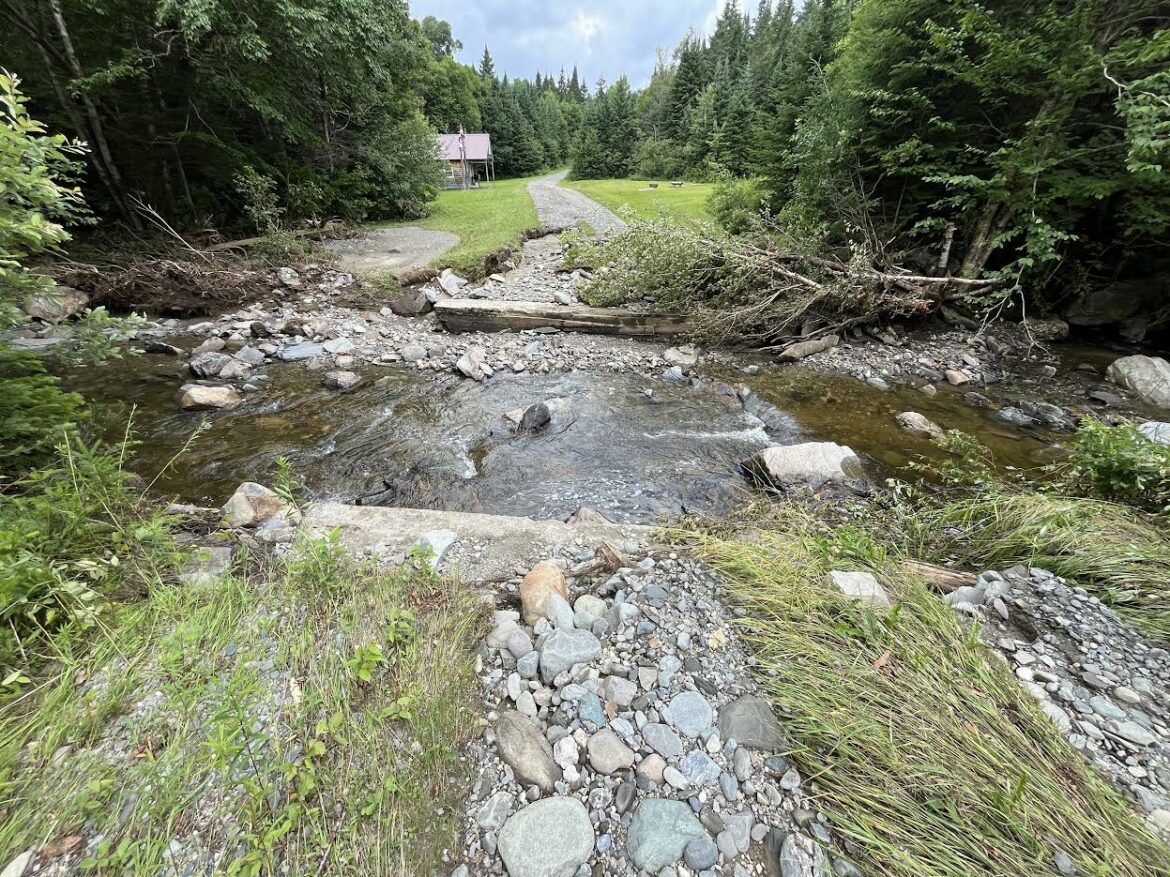By PAULA TRACY, InDepthNH.org
PITTSBURG – Ravaged by summer’s torrential rains, progress is coming to the state’s valued trails in the Great North Woods which are crucial to tourism here.
And communities in Grafton and Coos counties whose infrastructure was hit hard by the July storms are invited to begin applying for federal reimbursements.
Johanna Lyons, state park planning and land use administrator for the Department of Natural and Cultural Resource’s Division of Parks and Recreation, said closures in the Connecticut Lakes Headwaters tract due to July storms are beginning to reopen after work has been done.
She said Big Brook Road will open today, Aug. 23 and Coon Brook is expected to reopen next week once the road dries out.
Lyons noted that federal help from the Emergency Management Agency issued a disaster declaration earlier in the week for Coos and Grafton Counties which will allow the DNCR to apply for federal funds to repair the damage.
“There are several crossings on the roads that the culverts will need to be upsized or bridges installed to accommodate the higher flows we are experiencing. FEMA will reimburse for in-kind repairs, however, increasing resiliency is considered a mitigation project that requires a cost share negotiation with FEMA,” she said.
Torrential rain July 10-13 tore out roads, bridges and trails used for recreation in the region.
Particularly hard hit were the communities of Dalton, Lancaster and Pittsburg which wreaked havoc on the infrastructure last year.
On Tuesday, officials announced that President Joe Biden granted Gov. Chris Sununu’s request for a major disaster declaration.
An assessment by the Federal Emergency Management Agency, working with State and local emergency management officials found damage totaled $5.2 million.
In July, the state Fish and Game Department announced trails closures in Pittsburg near the border with Canada due to damage to the roads including washed out bridges and culverts.
The declaration allows communities in the two counties to move forward with seeking federal funding assistance, which they will need to apply for.
Agencies that are eligible for assistance include local, county and state agencies as well as nonprofits that provide critical services.
Robert Buxton, director of The New Hampshire Department of Safety’s Division of Homeland Security and Emergency Management said the declaration will provide a step toward recovery in the communities that experienced damages from the severe storms and flooding in July.
“We will continue to assist communities with the process of making repairs and working on mitigation projects to prevent similar problems in the future,” Buxton said.
The President’s declaration also makes federal support available through the Hazard Mitigation Grant Program on a cost-sharing basis for hazard mitigation measures statewide and the Public Assistance Program.
The purpose of the Hazard Mitigation Grant Program is to reduce the loss of life and property due to natural disasters and to enable the implementation of mitigation measures during the immediate recovery from a disaster.
FEMA can fund up to 75 percent of the eligible costs of approved projects. The Public Assistance Program provides grants to state and local governments to assist with disaster recovery, including debris removal, emergency protective measures, and permanent restoration of infrastructure.
HSEM will contact communities in the affected counties to set up briefings to explain the process of applying for assistance.
The briefings will be a combination of in-person and online.





